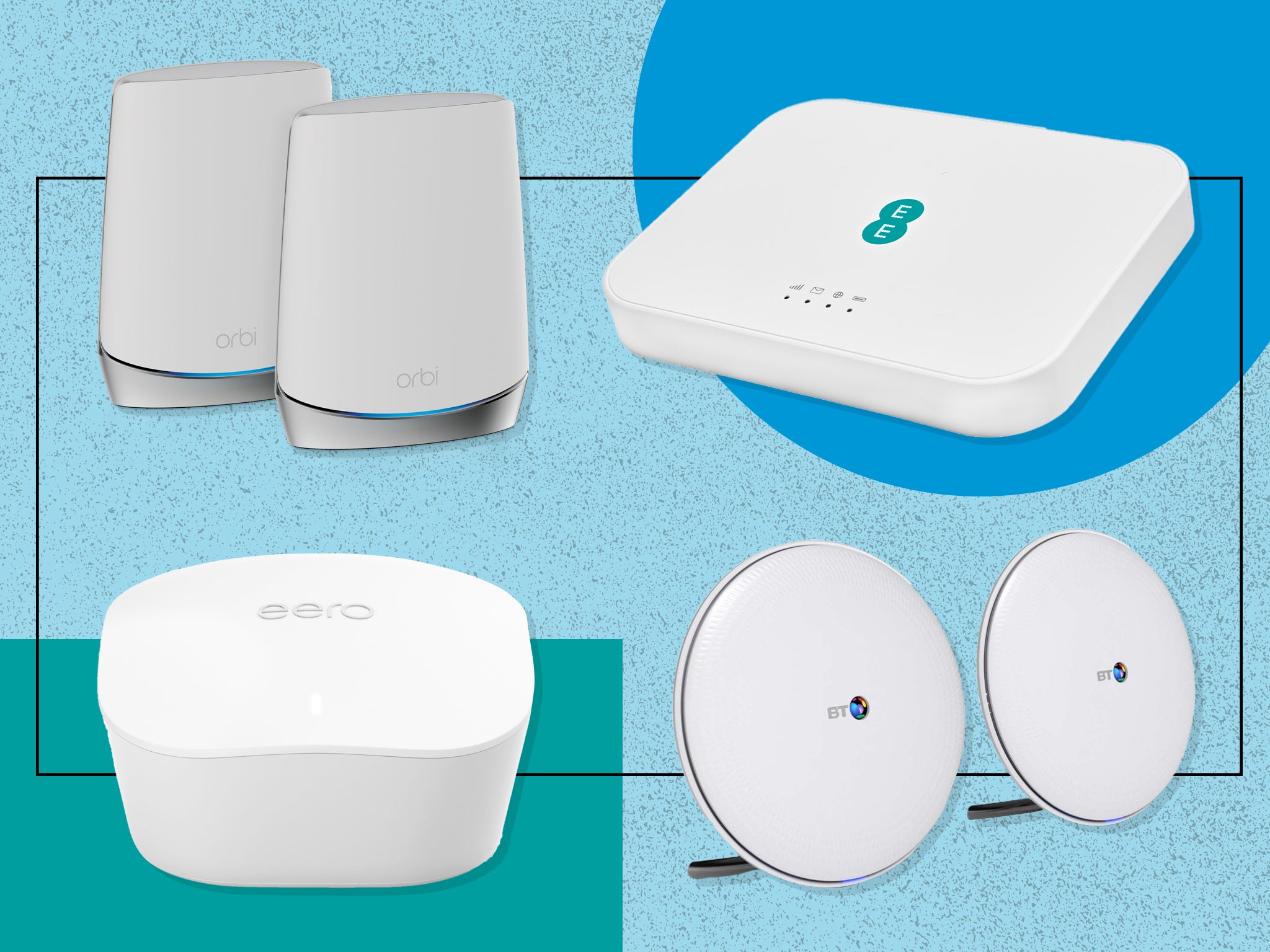
The Independent's journalism is supported by our readers. When you purchase through links on our site, we may earn commission. Why trust us?
6 best mesh wifi systems to give internet extra zip and coverage
You don’t have to be tech-savvy to set up these devices
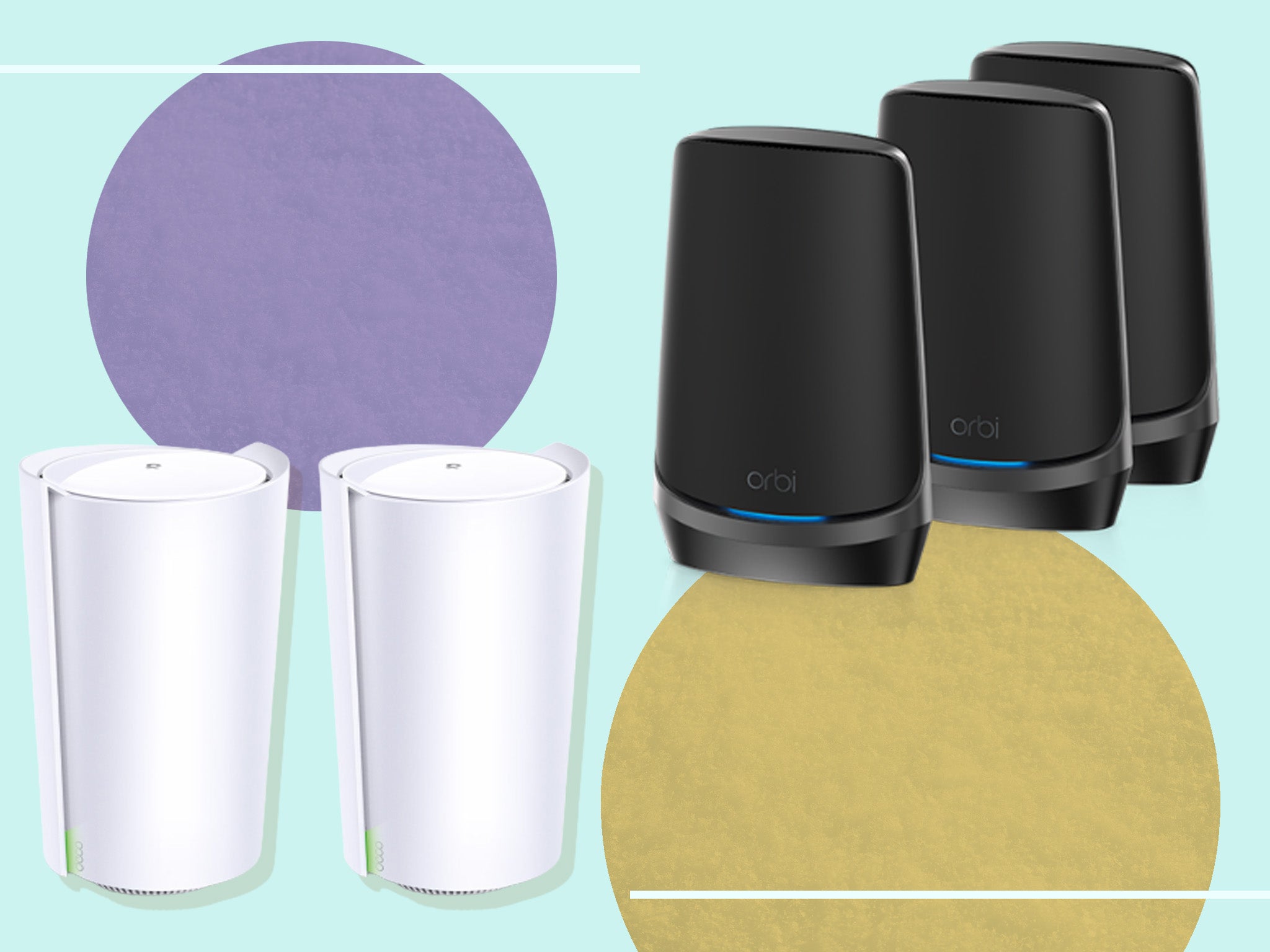
Patchy internet reception in your home office? Find Netflix is spending ages buffering in your bedroom? Fear not, mesh wifi is here to solve all your internet-speed woes.
Mesh wifi is a whole-home wifi system. You have your main router, and then satellites in other rooms spread the connection. Each satellite essentially acts as a meeting point in the chain (or mesh), to give even coverage. This means you’ll have stable and speedy internet wherever you are in your house. This is ideal for homes that suffer from dead zones – large houses, or those with thick walls for example.
They’re useful if you have a lot of devices connected to your network, such as smart-home devices (smart doorbells, plugs, thermostats and so on) because many are designed to have more than 100 devices connected to them. Some even have dedicated networks for your smart home devices, so they don’t clog up your network.
All the mesh wifi systems we tested are wifi 6 – the new generation of wifi – which is essentially faster and better at dealing with lots of devices connected to it. While not all devices support wifi 6, you will still be able to use the mesh system and you are, at least, future-proofed.
Other clever (less techy) things mesh wifi can do is provide extra security for connected devices, and they all have parental controls that allow you to personalise profiles and set limits and revoke internet privileges.
How we tested
We tested all the mesh systems in a house with very iffy connectivity from our standard IP-provided router. We wanted all our dead zones eliminated and we wanted the same internet speeds on the top floor that we get when sat next to our router. The house is medium-sized, with very thick walls and some awkward shapes – so we feel we threw as much tricky stuff at the systems as was within our means. Other things we looked at were how easy the systems were to set up, decent parental controls, whether the app interface was easy to use, and any useful-to-have features. These are the ones we really connected to...
The best mesh wifi routers for 2022 are:
- Best overall mesh wifi router system – Amazon eero 6+, pack of 3: £319, Amazon.co.uk
- Best mesh wifi router system for busy families – Amazon eero pro 6E, pack of 3: £799, Amazon.co.uk
- Best entry point mesh wifi router system – Mercusys Halo H80X whole home mesh wifi system: £118.80, Cclonline.com
- Best high-spec mesh wifi router system – Netgear Orbi RBK963 wifi 6E mesh system: £1,499.99, Netgear.com
- Best value mesh wifi router system – TP-Link Deco X60 whole home mesh wifi 6 system: £201.49, Box.co.uk
- Best mesh wifi router system for parental controls – Netgear Orbi RBK752 tri-band mesh wifi 6 system: £349.99, Netgear.com
Amazon eero 6+, pack of 3

- Best: Overall
- Type: Dual band
- Satellites: Three
- Ethernet ports: Six
- Max speed: Up to 1 GBPS
- Range: 460sqm
The eero 6+ clearly had plenty of work to make it as easy to use as possible. It took us a matter of 10 minutes to set up the whole network. The set comes with three satellites, one of which needs to be plugged into your router, with the remaining two being set up through your house. Any of the satellites can then act as a smart home hub. The satellites are nice and small on this system – about the size of two playing cards. We liked this as they were discrete around our house.
We loved this simple little system. It worked perfectly throughout our medium-sized house, eliminating all the dead zones across three floors. Our connection was stable, and it meant we had speedy internet even when we were far from our router. Finding places to put the satellites was easy, as the app guided us through it. We also liked that it gave us a 30-day free trial of eero security, showing us what threats to our security it had blocked.
It’s easy to see what speeds you’re getting and, if you have regular visitors, it’s easy to share the network with other people or set up a guest network. As parents, we liked that you could block sites and “pause” connected devices from the app – it’s one way to get your kids to come downstairs for dinner.
Amazon eero pro 6E, pack of 3
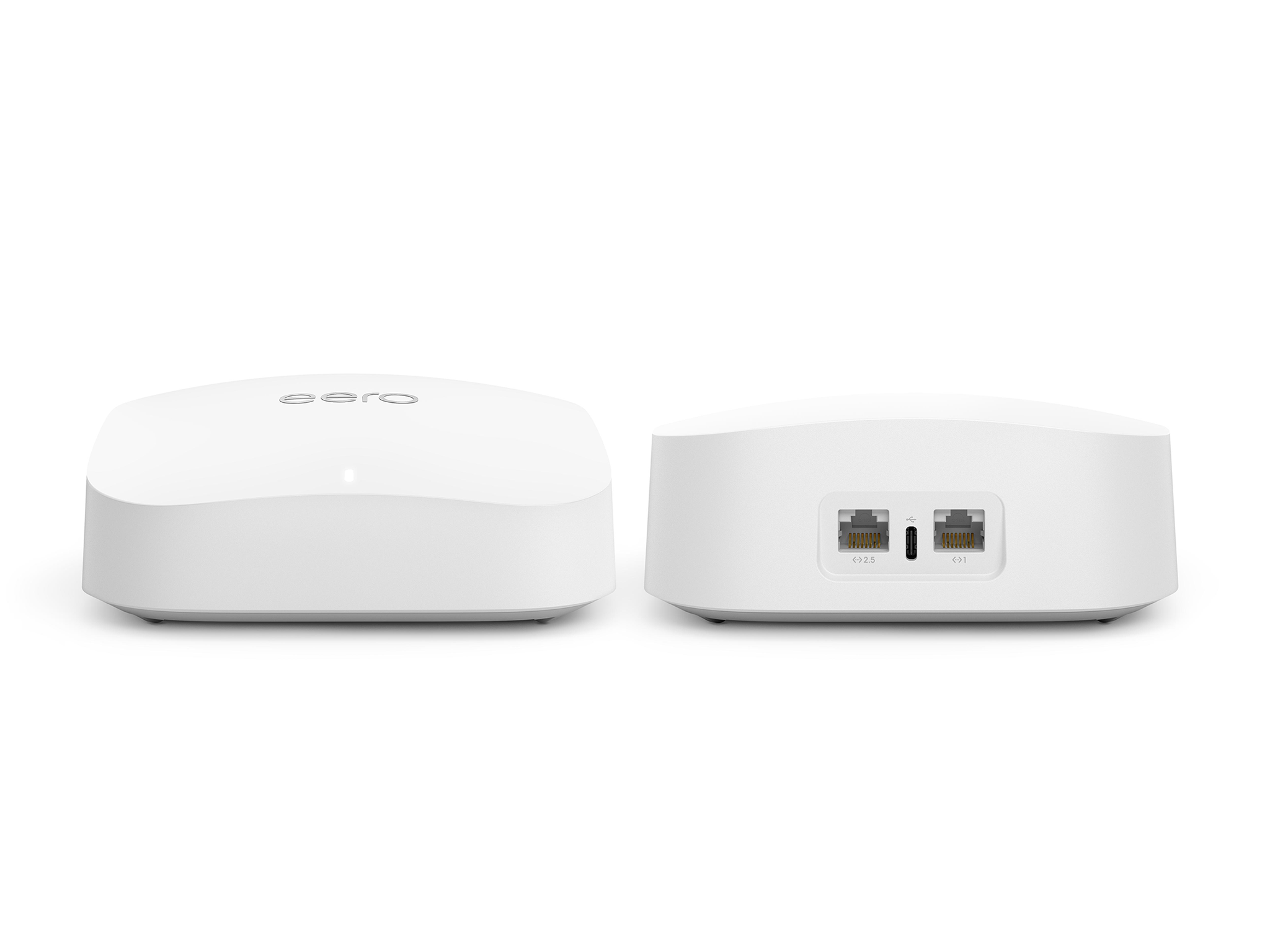
- Best: For busy families
- Type: Tri band
- Satellites: Three
- Ethernet ports: Six
- Max speed: Up to 1 GBPS
- Range: 560sqm
The eero pro 6E has all the same nifty functionality as the eero 6+ (£319, Amazon.co.uk) in that it is an absolute breeze to set up – even for non-techy types – and the app interface is intuitive. Like the 6+, it also comes with three satellites and six ethernet ports (each has two each), but they are slightly larger – about the size of a small side plate. So, slightly less discrete around the home, but nothing compared to some others in this round-up.
The pro 6E+ is really Amazon’s (who own eero) premium model. It offers connectivity to more than 100 devices, so even if your site is packed with smart-home devices and people working, it shouldn’t fail you. It is tri-band, offering access to 2.4 GHz, 5 GHz and 6 GHz band, which means you shouldn’t ever lose bandwidth, even if you’re gaming, streaming UHD, video conferencing and downloading huge files all at once.
While the app is great for most, it does have limited advanced controls for those techy types who like to – excuse the technical term here – tinker. This might frustrate some, but be a welcome relief to others. We loved that you can separate profiles on the app, with each family member’s devices linked to their profile. This means you can either stop wifi to one device, or to the wifi entirely for each individual. Handy when teens are trying to access TikTok after hours, but you want to get on with the important business of Netflix.
Mercusys Halo H80X whole home mesh wifi system
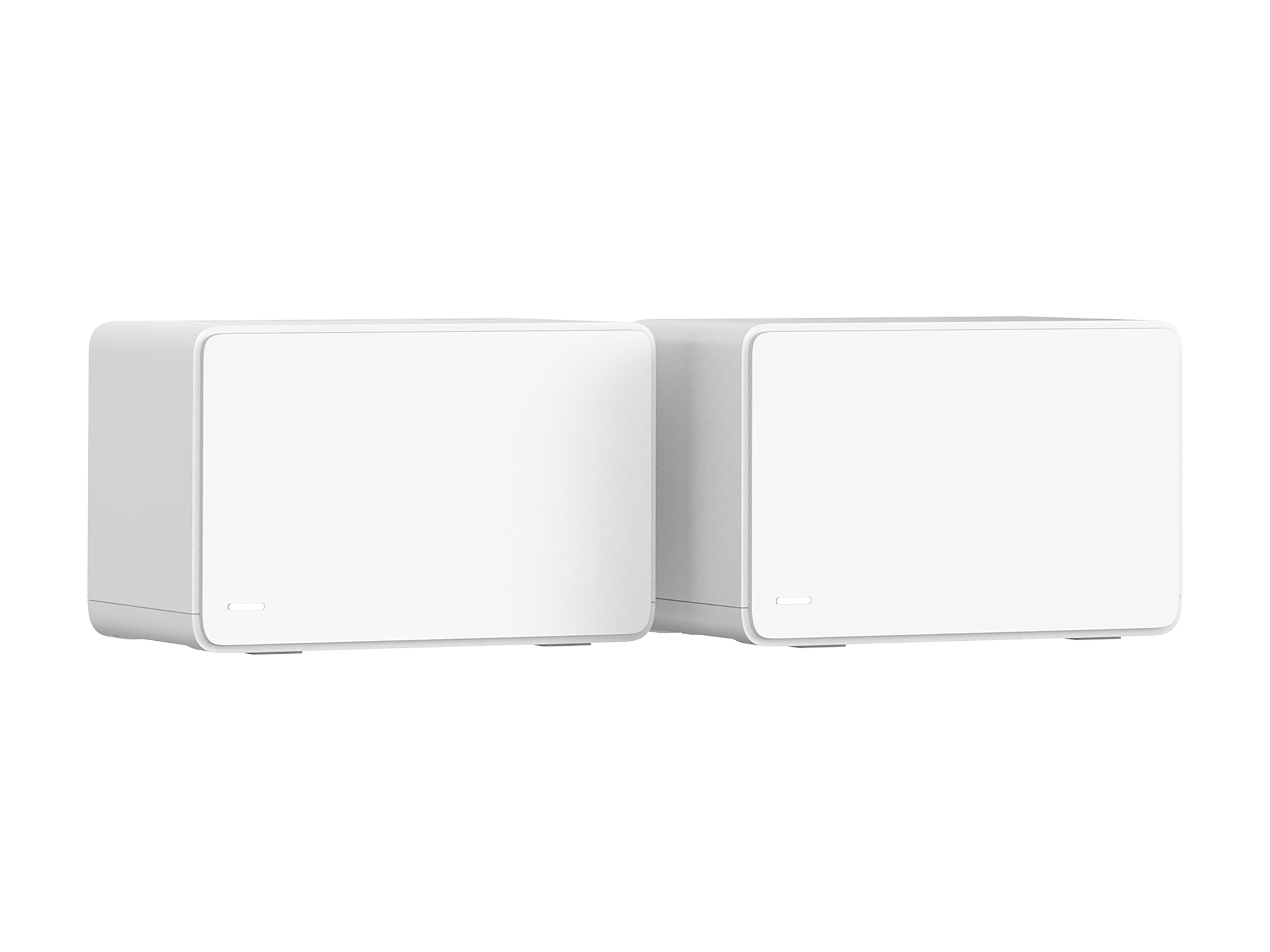
- Best: Entry-point system
- Type: Dual band
- Satellites: Two
- Ethernet ports: Six
- Max speed: Up to 3 GBPS
- Range: 460sqm
If you have a smaller space – a home, rather than a sprawling estate perhaps – then this is a speedy option. With speeds of 3GBPS it’s going to zip along. But it’s dual band, meaning you might start to struggle for bandwidth if you have a huge number of connected devices doing hard work, eg all streaming Ultra HD and VR gaming and conference calls.
In the average family home, we think you’ll be fine though. The coverage cloaked our medium-sized house in secure, stable internet connectivity. We had no trouble streaming UHD in our top room, far away from our router. Plus, set up is easy, with an app guiding you through the 10-minute process.
The app isn’t the slickest and most user-friendly we tried, but it’s absolutely fine. We’d go no higher than fine though. However, if you’re someone who likes to have ultimate control then there are advanced settings. If you are terrified of touching anything in case you break the internet, you’ll also be fine. You can set parental controls, blacklist devices – neighbours will no longer be able to piggyback on your wifi (soz lads) – and set up a guest network. It also shows you in real-time what speed each device is getting, and you can prioritise devices which is a nice little function.
Netgear Orbi RBK963 wifi 6E mesh system
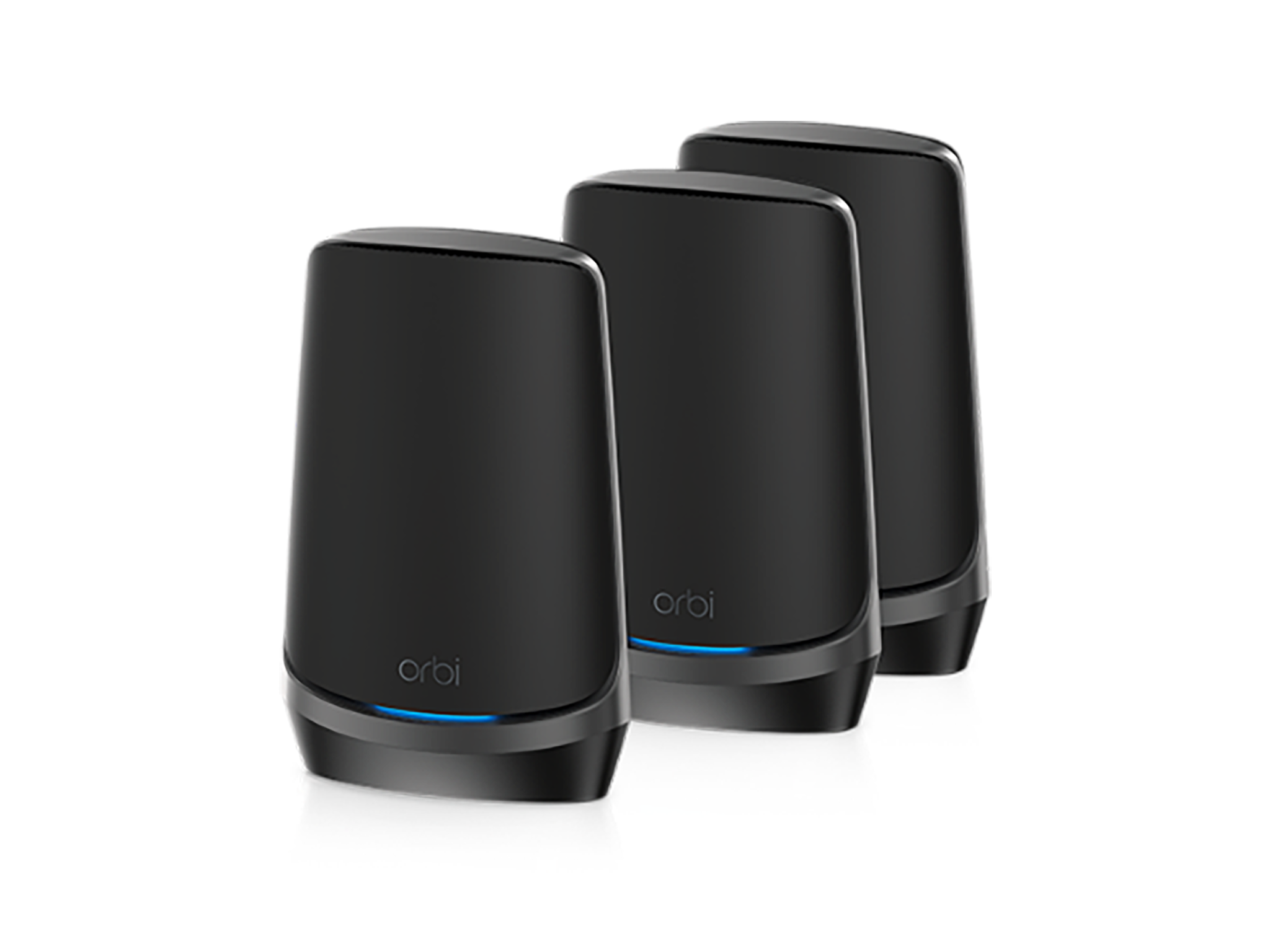
- Best: High-spec system
- Type: Quad band
- Satellites: Three
- Ethernet ports: Six
- Max speed: Up to 10GBPS
- Range: 700sqm
Everything about this mesh system is big. Big range, big speeds, big satellites – and yep, big price. There’s not a smaller bundle, so you have to be all in here but the good news is that you get one router and two satellites in the box. The Netgear Orbi app also provides a smooth set-up, taking you through all the very simple steps to get you up and running.
It’s a sophisticated system, make no mistake. It offers you a guest network, as well as an IoT (internet of things) network so your smart devices have their own network and don’t clog up your day-to-day. One thing that surprised us was that you had to pay for both security and parental controls as subscriptions on the Orbi. Surely at this price tag, those things should be thrown in?
What was incredible though was the coverage and the speeds. We can’t deny it delivers on two of the most important things you want from a mesh wifi. To get the most from this system, you really need 6E-enabled devices, which are currently thin on the ground but it is an expanding market. This system is insanely slick, fast, and impressive – but also probably more suited to early adopters and those who want to future-proof their networks.
TP-Link Deco X60 whole home mesh wifi 6 system
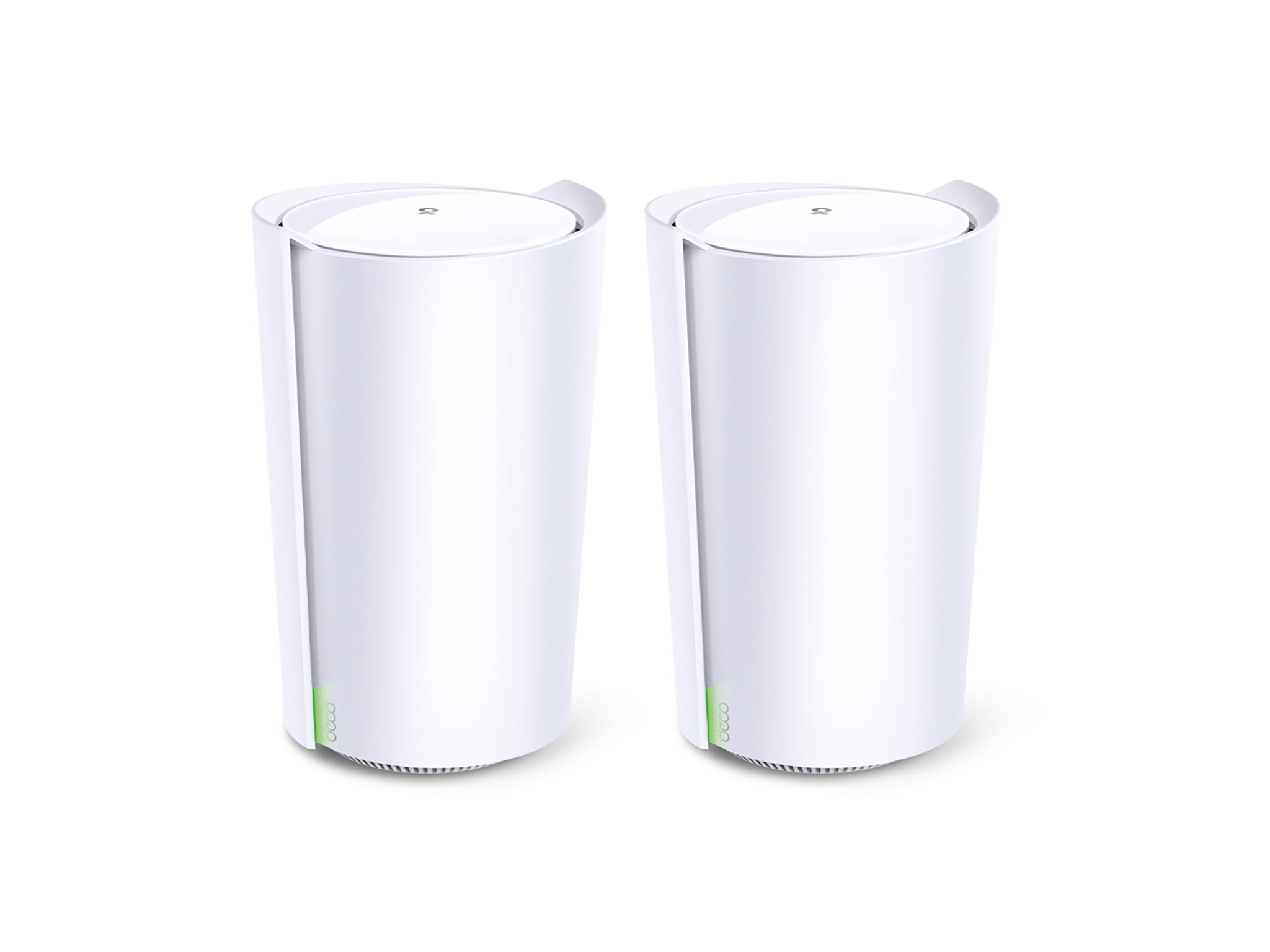
- Best: Value system
- Type: Dual band
- Satellites: Two
- Ethernet ports: Four
- Max speed: Up to 3 GBPS
- Range: 460sqm
We liked the satellites on this system – fairly unobtrusive and didn’t take up too much space. The set-up was painless too – again, an app just guides you through the process in less than 10 minutes. We found the coverage great, it eliminated all the hard-to-reach dead zones in our thick-walled, awkwardly shaped house. And the speeds anywhere in the house were lightning quick, meaning we could stream UHD while someone else was video calling, and the kids were gaming – and no one suffered for it.
Speaking of kids, the parental controls on the Deco X60 are decent. There are some premium features you have to subscribe to for access, but mostly it’s built-in. We liked that you can create profiles for family members, and assign their devices to them. You can then see what sites have been viewed the most viewed, pause access and see the total time spent online. You can also filter the content each profile can see, removing adult content, gambling and yes, social media if you want to. You can also just outright ban websites, as well as setting bedtimes when devices will be booted off the network until the morning. Overall we were impressed with this system – it’s fast, slick and decent value for money.
Netgear Orbi RBK752 tri-band mesh wifi 6 system
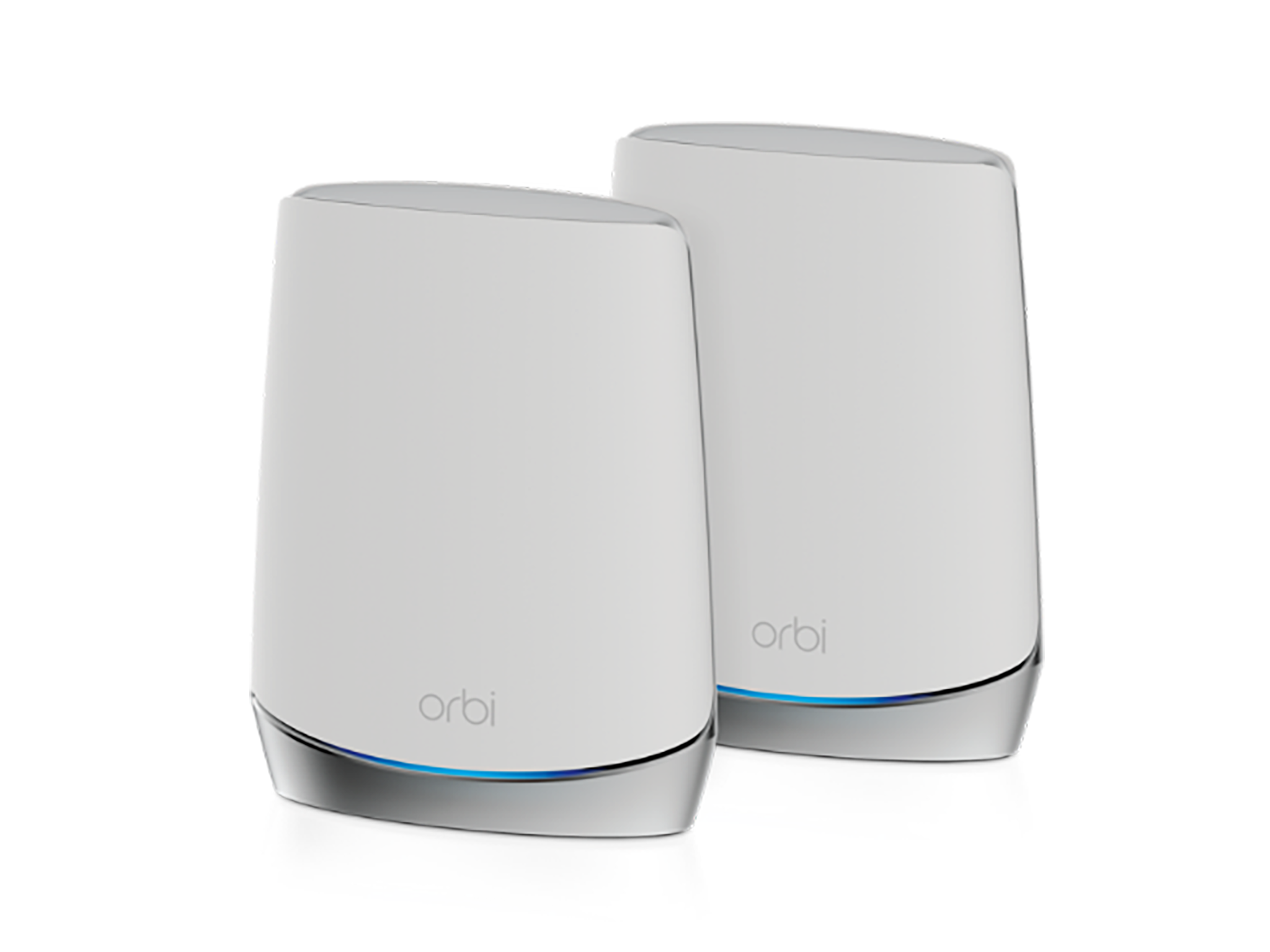
- Best: For parental controls
- Type: Tri band
- Satellites: Two
- Ethernet ports: Seven
- Max speed: Up to 4.2 GBPS
- Range: 350sqm
In this box comes one router and one satellite. Set up via the slick app is easy, but does take slightly longer than the other systems we tested. That said, it still only took 20 minutes, so we can’t really complain. And once up and running, it gave good coverage throughout our house.
Despite this being a two-unit set-up, it didn’t seem to stop it from boosting speeds and coverage over a medium-sized house with multiple users and plenty of smart-home devices. Netgear has aimed this very much at medium-sized households though, and there it sits nicely.
The parental controls are great on the app, but you get a 30-day free trial and then start having to pay for a subscription. You can set the profiles to child, teen, adult or none, with the latter giving you free rein over everything. The controls also let you set screen-time limits, bedtimes and give rewards in the form of extra screen time. You can also pause a profile’s access to the wifi entirely and all their devices will be booted off. We also liked that you could test your internet speeds – very decent indeed, thank you very much.
The verdict: Mesh wifi routers
We were so impressed with the sleek, subtle eero 6+ system. It is great for medium-sized households and not intimidating for non-techy types to set up and use. It also genuinely gave our internet extra zip and coverage, which is what we’re really looking for here. If you’re looking for something more comprehensive, then the Orbi RBK963 blows everything else out of the water.
Compare the best broadband deals with Independent Advisor
Is your device due an upgrade? These are the best tablet deals to shop this month


